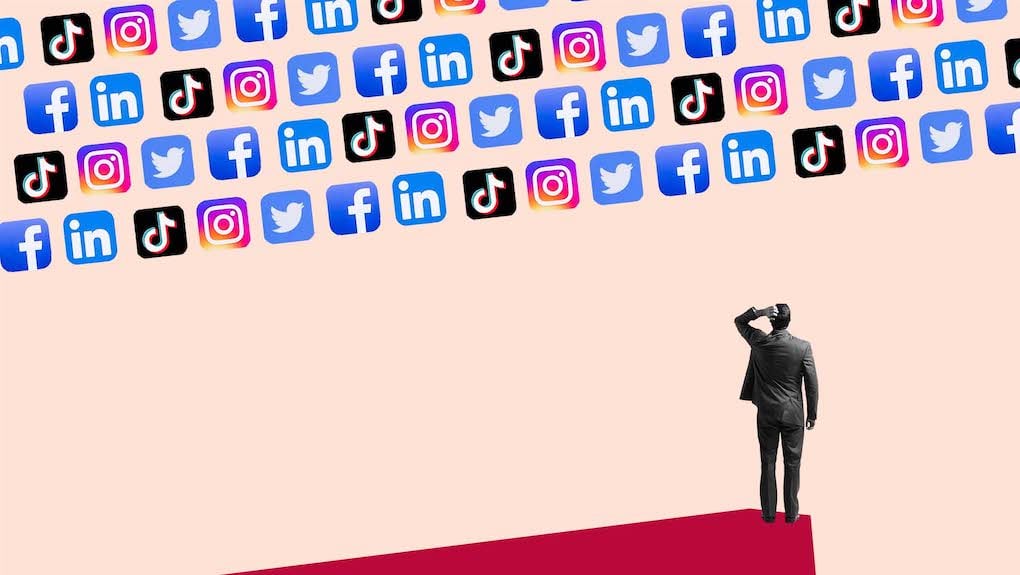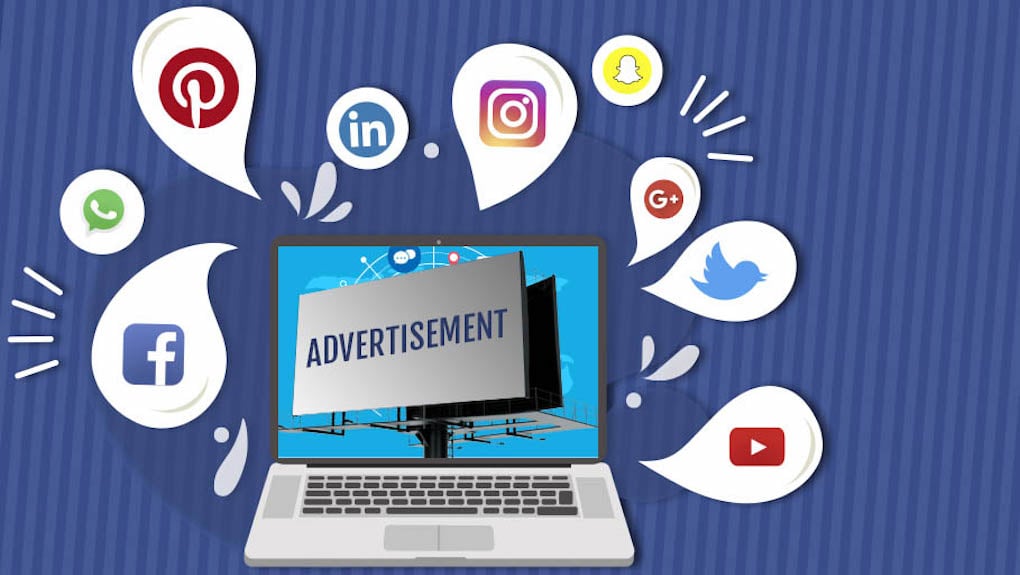Too many B2B marketers dismiss social media as only for consumer-focused businesses, but that’s simply not true. Social media is a powerful tool for B2B marketers and can be used to build better relationships with customers and prospects, reach a wider audience, build brand awareness, and even generate leads.
Today, 31.3% of global Internet users use the Internet for business-related research, and 22.7% use social for work-related networking and research – and that's not just on LinkedIn. Facebook is now the second-best B2B social media platform according to the Content Marketing Institute. Facebook took this spot away from X, which continues to drop in popularity. Even YouTube, and Instagram have proven themselves as valuable B2B social media platforms.
Here's how to harness B2B social media platforms from the ground up.
1. Know your audience, know your messaging
Any B2B business can win on social, as long as they start with the right strategy. The key to a good strategy starts with:
- Knowing your audience
- Knowing your messaging
Of course, finding out where your target audience hangs out isn't always a cakewalk. You need to do your research:
- What platforms are they using?
- What topics are they discussing?
- Who are the experts and influencers in your field?
- Who is providing content and resources that they rely upon?
The great thing about B2B brands is they already collect detailed information on their best customers and prospects. Your CRM data, Google Analytics, and surveys are all great sources of information.
Once you have the who, it's time to focus on the how. B2B audiences are savvy and have high expectations when it comes to the content they engage with. Your messaging should be tailored to your audience, and speak to their specific pain points. In terms of medium and message, B2B strategies should be education-based and focus on video first – although other forms of content can also be useful later on in your funnel.
For example, IBM recently created a social media campaign about the environmental benefits of code. Did you ever consider that code could reduce pollution, protect biodiversity, and improve resource management? Probably not. But now, IBM has a foot-in with a larger swath of environmentally conscious prospects.
2. Find the right platform
Different social media platforms have different uses and audiences. While LinkedIn is the obvious choice as a professional social media platform, don't discount other platforms like Instagram, TikTok, or even Threads. Depending on your target audience and message, those might be the best places to reach them.
Bonus read: The do's and don'ts of creating engaging social media video content.

Here’s a quick breakdown of a few major platforms:
- LinkedIn is the place for thought leadership content, directed advertising, and employee engagement.
- Facebook is ideal for ads, but also non-promotional content centered around employees.
- X can be used to spot trends and interact with customers and business influencers alike.
- Instagram is great for visuals (think: infographics, brief how-tos) and culture-centric content.
- YouTube is perfect for how-to tutorials, interviews, presentations, commercials, and event recaps.
We also recommend separating professional social media accounts when targeting different verticals, products, and markets. For example, Facebook for news, Twitter or customer service, and LinkedIn for careers and thought leadership.
3. Educate, entertain, and inspire
Many B2B businesses assume that because what they are selling is serious, they have to be serious too. Yet, it's important to remember that behind every B2B sale is an individual—someone who likely has a sense of humor and, at the very least, likes to be entertained.
Don't be afraid to let your brand's personality shine through. Consider adding humor, emojis, and even memes to your content in order to entertain your audience if you think it would be well-received. If it feels right for your brand, experiment with different mediums like cinemagraphs and augmented reality.
Even if your audience expects a more professional tone, be creative with how you delight, inspire, or otherwise bring joy to their day. Consider email marketing platform Mailchimp, whose recent "Guess Less, Sell More" campaign used playful visuals and assets to help small businesses "take the guesswork" out of their email marketing campaigns.
Remember, your audience will only believe your positioning if you can prove it with your content. Focus on building an authentic presence that sets you apart from the competition.
4. Pay to play
Love it or hate it, paid social is the best way to reach your audience, and your goals, faster. That said, it's not enough to create a budget and start pumping out ads. B2B paid social media requires in-depth audience data, tailored messaging, and visual content that will knock their quarter-length merino socks off.
If you haven't ventured into the world of paid social just yet, you might be wondering where to start. While LinkedIn is still the best platform for paid B2B advertising, Facebook, YouTube, and Instagram aren't all that far behind.
Still, your audience is unique, and so are the ways they interact with social media. While they may love reading your thought leadership links on LinkedIn, they may recoil at a sponsored message in their DM's. Similarly, your B2B audience may take aim at brand messages on Instagram, yet be enthralled by an engaging video ad on Facebook.
The best way to determine which B2B social media strategies work for your audience is to simply experiment. Conduct a comparison of social media platforms and measure the outcome. Which platform do they engage with more? Is there a particular post type that gets better engagement across all of them?
You may find that some B2B social media strategies yield better results than others. Stick with the juicy ones that give you the highest ROI and keep testing other strategies.

5. Keep it simple
Finally, don’t stretch yourself too thin by trying to be everywhere. It’s far better to focus your time and resources on one or two key platforms and do it well than to try and be present on all of them.
B2B brands already know the value of quality over quantity. So, apply that principle to your social media strategy. Ask yourself, where are my efforts most valuable? Which platforms, content, and strategies will make the biggest impact?
If you're working with limited social media resources, focus on content that is already trending with your audience. Were new regulations introduced that affect your industry? Did a competitor recently make a surprising move? Is the economy in flux? Capitalizing on this content can help you make the most out of the platforms you're already on. Just remember to tailor the content to each platform.
B2B social is a long game
Unlike B2C social media, B2B social media strategies are more effective when optimized for the long term. It's unlikely you're going to win a sale from one piece of content, so focus on building relationships, providing value, and increasing brand awareness. (Though know that B2B can certainly learn from B2C marketing.)
The more you know about your audience the better here. So, consider how you might gather audience data both in and out of social. Are your lead magnets and website forms capturing email data? Are those customers on social media? If so, where? Similarly, how might you track offline conversions and lead those back to your social media profiles?
Just like any sound marketing strategy, it's all connected. Don't be afraid to ask questions, leverage data, and think outside of the box to connect the dots.